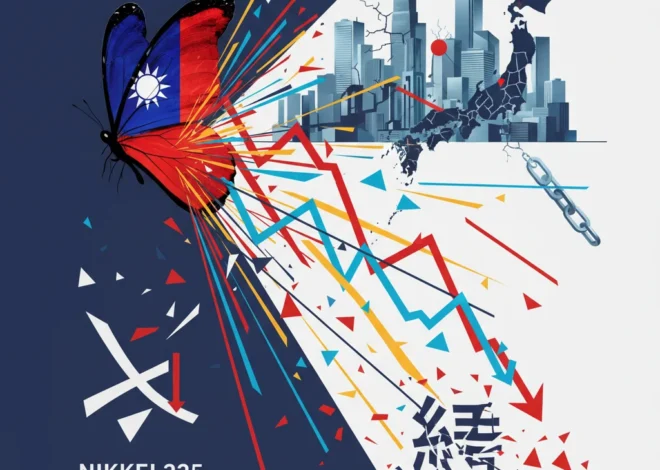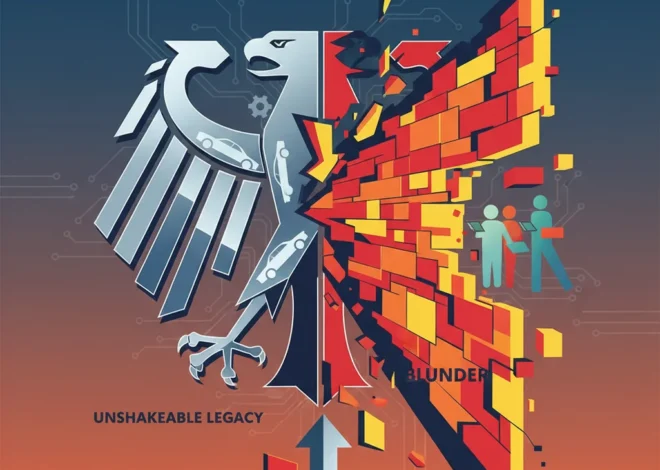
Shutdown Over: Dissecting the Economic Fallout and What It Means for Investors
The political standoff that gripped Washington has finally drawn to a close. After a historic and grueling period of uncertainty, the U.S. House of Representatives has approved a funding deal, officially ending the longest government shutdown in the nation’s history. The White House has confirmed that the President will sign the bill, bringing a temporary end to the fiscal impasse that furloughed hundreds of thousands of federal workers and cast a long shadow over the American economy.
While the reopening of government agencies is a welcome relief, for investors, business leaders, and finance professionals, the story is far from over. The resolution of a political crisis is merely the beginning of understanding its economic consequences. This event was not just a headline; it was a real-world stress test for the U.S. economy, a case study in political risk for the stock market, and a stark reminder of how deeply intertwined Washington’s decisions are with the world of finance. In this analysis, we will move beyond the political theater to dissect the tangible economic damage, explore the market’s surprisingly stoic reaction, and outline the critical lessons for strategic investing in an era of heightened political volatility.
The Anatomy of a Record-Breaking Impasse
To fully grasp the financial implications, it’s essential to understand the mechanics of the shutdown itself. At its core, the 2018-2019 shutdown was a consequence of a legislative stalemate over funding for a southern border wall. This political disagreement led to a lapse in appropriations for about a quarter of the federal government, initiating a partial shutdown that would ultimately last 35 days. According to the Financial Times, the breakthrough came as bipartisan pressure mounted, culminating in a deal that would fund the government and establish a committee to negotiate border security funding separately.
During this period, approximately 800,000 federal workers were either furloughed or required to work without pay. This had an immediate and direct impact on household finances, curbing consumer spending and creating pockets of economic hardship across the country. Beyond the human cost, critical government functions were disrupted, ranging from SEC reviews of IPO filings to the publication of key economic data that traders and analysts rely on to make informed decisions.
Cleared for Chaos: How a Government Shutdown Grounds Flights and Shakes the Global Economy
Quantifying the Economic Damage
While the political rhetoric was loud, the economic data speaks for itself, painting a clear picture of the shutdown’s cost. The nonpartisan Congressional Budget Office (CBO) provided a sober assessment of the financial toll. Their analysis revealed that the five-week shutdown had a significant, albeit largely temporary, negative impact on the U.S. economy.
The CBO estimated that the shutdown reduced the real Gross Domestic Product (GDP) in the fourth quarter of 2018 by $3 billion and by a staggering $8 billion in the first quarter of 2019. While the CBO projected that much of this lost economic activity would be recovered as the government reopened and back-paid its employees, it concluded that approximately $3 billion in real GDP was permanently lost. This permanent loss stems from deferred or canceled private-sector activity that relied on government services, permits, or contracts.
To put the impact into perspective, consider the following breakdown of the estimated economic effects:
| Economic Indicator | Estimated Impact |
|---|---|
| Permanent Loss to Real GDP | Approximately $3 billion (0.02% of annual GDP) (source) |
| Total Reduction in Q4 2018 & Q1 2019 GDP | $11 billion |
| Federal Workers Affected | ~800,000 (furloughed or working without pay) |
| Delayed Federal Spending | $18 billion in delayed compensation and purchases |
These figures illustrate that government shutdowns are more than just political theater; they inflict real and measurable economic pain. The disruption to government services, the halt in federal spending, and the erosion of consumer and business confidence create powerful headwinds that can slow economic momentum.
The Stock Market’s Reaction: A Lesson in Investor Psychology
Given the dire headlines and tangible economic costs, one might expect the stock market to have plummeted during the shutdown. However, the market’s reaction was surprisingly muted, a testament to Wall Street’s ability to look past short-term political noise. The S&P 500, a broad measure of the market, actually gained over 10% during the 35-day shutdown period from December 22, 2018, to January 25, 2019 (source).
Why the disconnect? Several factors were at play:
- Historical Precedent: Seasoned investors have seen this movie before. Historically, markets tend to be resilient during government shutdowns, operating under the core assumption that a resolution is inevitable. Traders often view any politically-induced dip as a short-term buying opportunity rather than a fundamental shift in the market’s trajectory.
- Focus on Fundamentals: The market was more focused on macroeconomic fundamentals, particularly the Federal Reserve’s monetary policy. During this period, the Fed signaled a more dovish stance, easing fears of aggressive interest rate hikes. This shift in Fed policy was a far more powerful driver of market sentiment than the political drama in Washington.
- Contained Economic Impact: While the shutdown was damaging, its impact was largely seen as temporary and not significant enough to derail the entire multi-trillion-dollar U.S. economy. Investors correctly bet that once the government reopened and back pay was issued, the dip in consumer spending would largely reverse.
For those involved in active trading, this event underscored a critical lesson: distinguishing between headline risk and fundamental risk is paramount. While the shutdown dominated the news cycle, the underlying drivers of corporate earnings and economic growth remained largely intact. This doesn’t mean political risk should be ignored, but it must be weighed against the broader economic and financial landscape.
Pharma's High-Stakes Gamble: Inside the Pfizer vs. Novo Bidding War for a Weight-Loss Unicorn
Long-Term Implications for Finance, Banking, and Technology
With the immediate crisis averted, the focus now shifts to the long-term implications for the finance and technology sectors. The shutdown serves as a powerful case study in operational and regulatory risk.
For the banking industry, the primary concern is the impact on credit quality. Federal workers and contractors who missed paychecks may have struggled to meet mortgage, auto, and credit card payments, potentially leading to a temporary spike in delinquencies. While the issuance of back pay mitigates this risk, it highlights the vulnerability of a significant portion of the workforce to government dysfunction.
The world of financial technology, or fintech, also felt the effects. The shutdown caused significant delays at the Securities and Exchange Commission (SEC), which had to halt the review of applications for initial public offerings (IPOs). Several high-profile tech companies were forced to postpone their plans to go public, creating a bottleneck that disrupted capital formation and strategic planning. This regulatory paralysis demonstrates how government instability can act as a direct brake on innovation and market dynamism.
Furthermore, the event reinforces the need for businesses across all sectors to incorporate political risk into their financial models and strategic forecasts. The increasing frequency of such standoffs suggests that they are becoming a recurring feature of the American political landscape, not an anomaly. Business leaders and investors must now plan for the possibility of future disruptions to government payments, regulatory approvals, and economic data releases.
The Great Unlocking: Why Schwab's Move into Private Markets Is a Game-Changer for Every Investor
Conclusion: A Fragile Truce
The end of the government shutdown marks the conclusion of one chapter, but the book on fiscal uncertainty remains wide open. The deal itself is a temporary patch, not a permanent solution, leaving the door open for future conflicts. For the diverse audience—from the everyday investor to the seasoned C-suite executive—the key takeaway is one of vigilance.
The direct economic damage, though partially reversible, has left a permanent scar. The resilience of the stock market offers a lesson in perspective but should not be mistaken for immunity. And the disruptions to the banking and fintech sectors highlight the far-reaching and often hidden costs of political instability. As we move forward, a clear understanding of the principles of economics and a sober assessment of political risk are no longer optional—they are essential tools for navigating the complex and unpredictable intersection of Washington and Wall Street.


